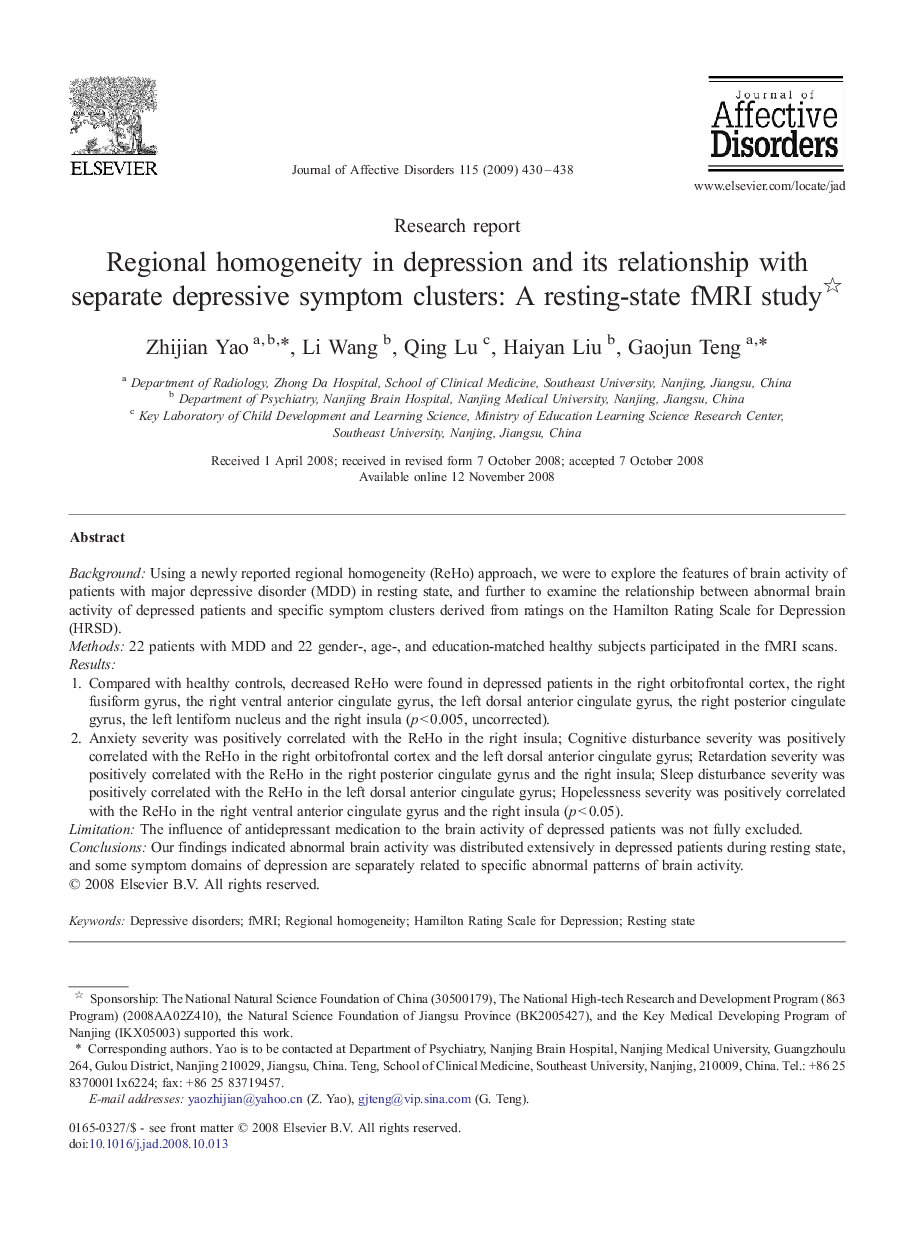| Article ID | Journal | Published Year | Pages | File Type |
|---|---|---|---|---|
| 4187158 | Journal of Affective Disorders | 2009 | 9 Pages |
BackgroundUsing a newly reported regional homogeneity (ReHo) approach, we were to explore the features of brain activity of patients with major depressive disorder (MDD) in resting state, and further to examine the relationship between abnormal brain activity of depressed patients and specific symptom clusters derived from ratings on the Hamilton Rating Scale for Depression (HRSD).Methods22 patients with MDD and 22 gender-, age-, and education-matched healthy subjects participated in the fMRI scans.Results1.Compared with healthy controls, decreased ReHo were found in depressed patients in the right orbitofrontal cortex, the right fusiform gyrus, the right ventral anterior cingulate gyrus, the left dorsal anterior cingulate gyrus, the right posterior cingulate gyrus, the left lentiform nucleus and the right insula (p < 0.005, uncorrected).2.Anxiety severity was positively correlated with the ReHo in the right insula; Cognitive disturbance severity was positively correlated with the ReHo in the right orbitofrontal cortex and the left dorsal anterior cingulate gyrus; Retardation severity was positively correlated with the ReHo in the right posterior cingulate gyrus and the right insula; Sleep disturbance severity was positively correlated with the ReHo in the left dorsal anterior cingulate gyrus; Hopelessness severity was positively correlated with the ReHo in the right ventral anterior cingulate gyrus and the right insula (p < 0.05).LimitationThe influence of antidepressant medication to the brain activity of depressed patients was not fully excluded.ConclusionsOur findings indicated abnormal brain activity was distributed extensively in depressed patients during resting state, and some symptom domains of depression are separately related to specific abnormal patterns of brain activity.
